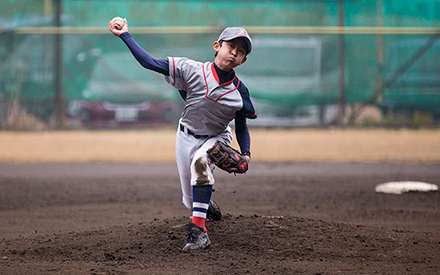
Cycling is a sport that almost anyone can participate in. From cruising the great outdoors to a spin class, this low-impact, physical activity provides an aerobic workout for your heart and lungs that benefits your overall health.
But as with any repetitive activity, you may develop discomfort or pain. If you have pain related to cycling, you might have a bike fit problem.
Because each person’s body is unique and bikes have different sizes and positioning, a personalized bike fit assessment is valuable. In the meantime, here are a few basic tips for a comfortable ride and preventing injury.
Bike Fit Basics
- Keep a controlled but relaxed grip of the handlebars.
- Change your position on the handlebars frequently for upper body comfort.
- Adjust your seat height so that when pedaling, your knee remains slightly bent at the bottom of the pedal stroke.
- Avoid rocking your hips while pedaling.
Your bike fit should be specific to your unique body! If have pain or limited mobility on a bike, or feel you need more assistance, a physical therapist can help!
A physical therapist can provide further recommendations to personalize your bike fit to help you minimize your risk for developing knee, neck, and low back pain, or other cycling related injuries. Here are a few things to look out for.
Problems and Possible Causes
Pain in the front of your knee. Possible causes include:
- A saddle that is too low.
- Pedaling at a low cadence (speed) with too much resistance from the gear you are peddling in.
- Using your quadriceps muscles (front of your thigh) too much when pedaling.
- Misaligned bicycle cleat for those who use clipless pedals.
- A muscle imbalance, such as strong quadriceps muscles, but weak hamstrings (muscles at the back of your thigh).
Neck pain. Possible causes include poor handlebar or saddle position. A poorly placed handlebar might be too low, at too great a reach, or at too short a reach. Handlebars that are too low can cause too much neck extension, which can lead to neck pain. A saddle with too much downward tilt also can be a source of neck pain, butt, or back pain.
Lower back pain. Possible causes include:
- Inflexible hamstrings.
- Low cadence.
- Using your quadriceps muscles too much in pedaling.
- Poor back strength.
- Handlebars that are too far or too low.
Hamstring tendinitis. Possible causes include:
- Inflexible hamstrings.
- High saddle.
- Misaligned bicycle cleat for those who use clipless pedals.
- Poor hamstring strength.
Hand numbness or pain. Possible causes include:
- Short-reach handlebars.
- Poorly placed brake levers.
- Downward tilt of the saddle.
Foot numbness or pain. Possible causes include:
- Using quadriceps muscles too much when pedaling.
- Low cadence.
- Faulty foot mechanics.
- Misaligned bicycle cleat for those who use clipless pedals.
Iliotibial band syndrome. Possible causes include:
- Too-high saddle.
- Leg length difference.
- Misaligned bicycle cleat for those who use clipless pedals.
A physical therapist can address these conditions and help you get back to enjoying your ride.
Physical therapists are movement experts who use the best available evidence to design treatment programs for each person’s needs and goals. They improve quality of life through hands-on care, patient education, and prescribed movement. You can contact a physical therapist directly for an evaluation. To find a physical therapist in your area, visit Find a PT .
Additional Information
Access our Health Center for Cyclists to explore some of the ways a physical therapist can help you recover from and avoid injury.


